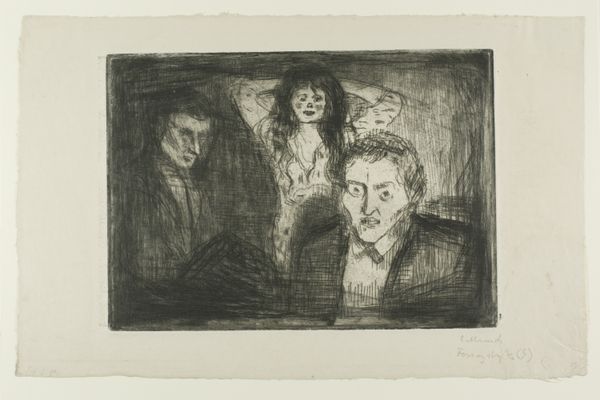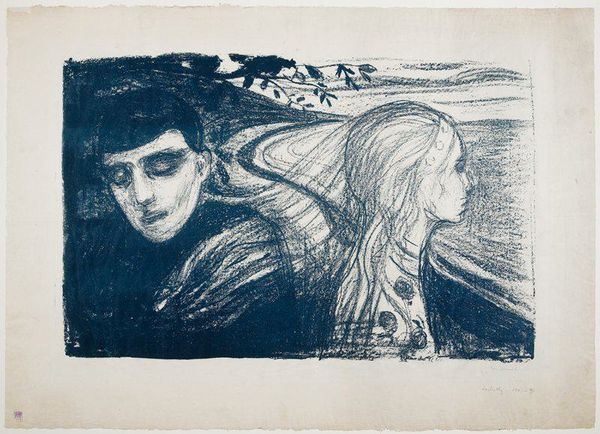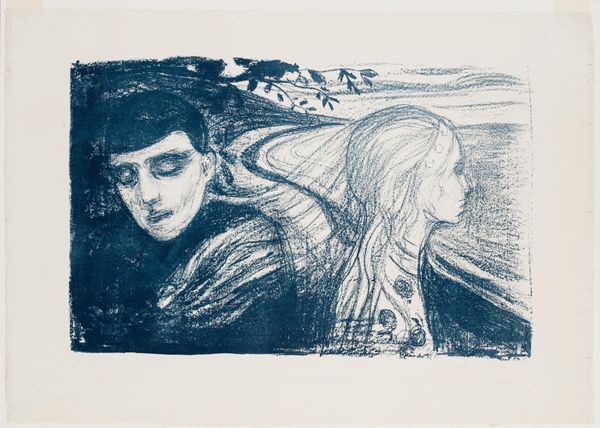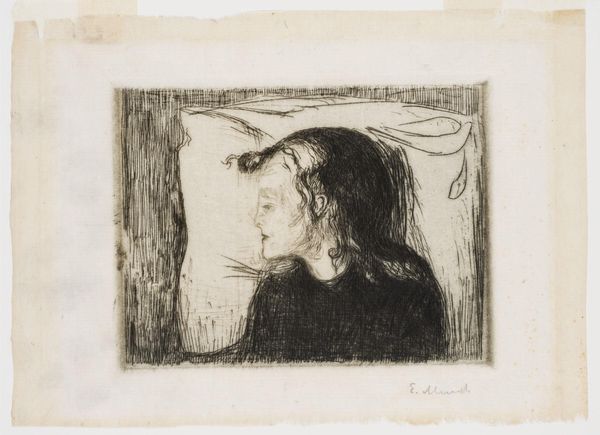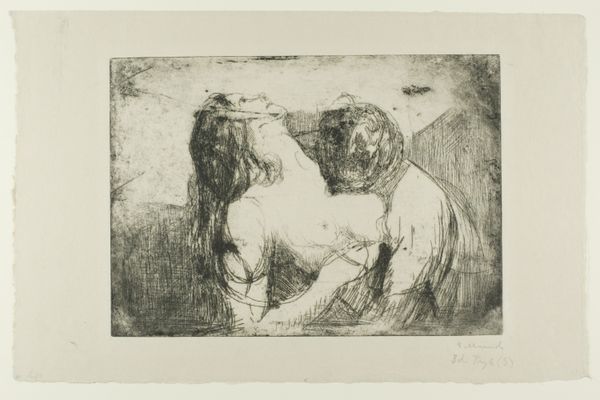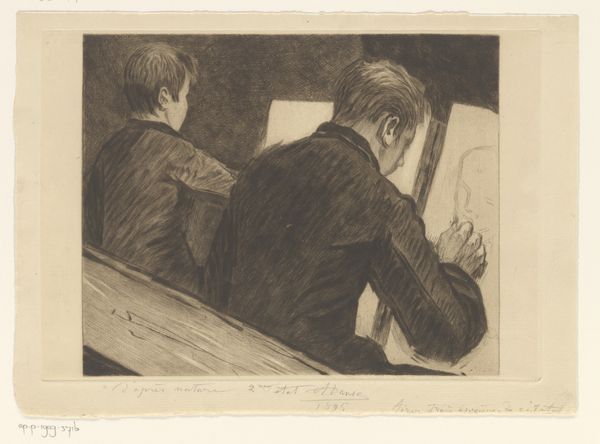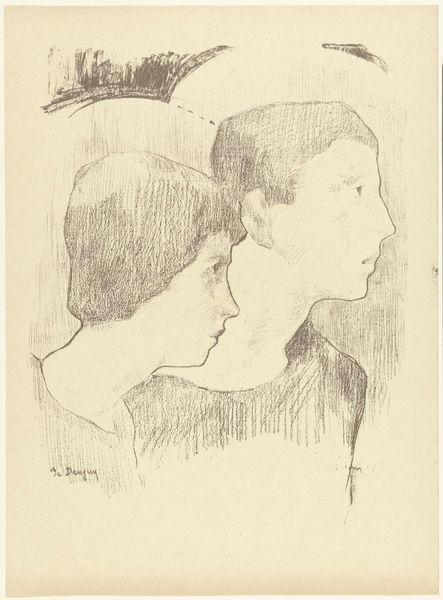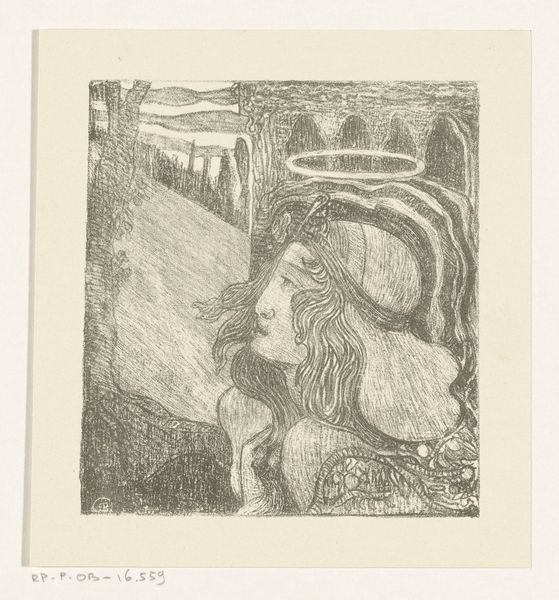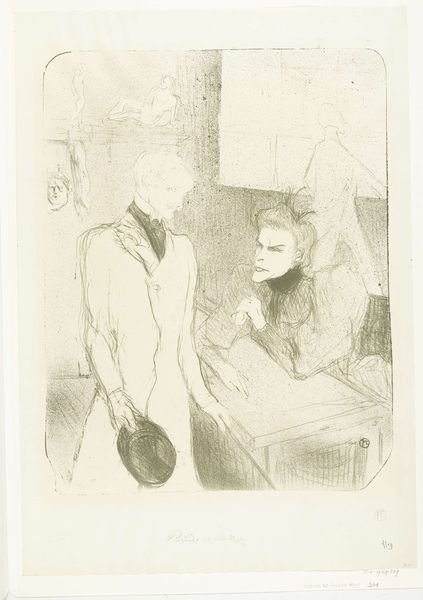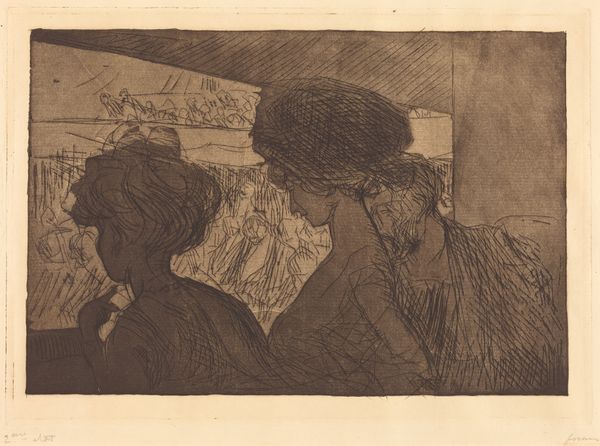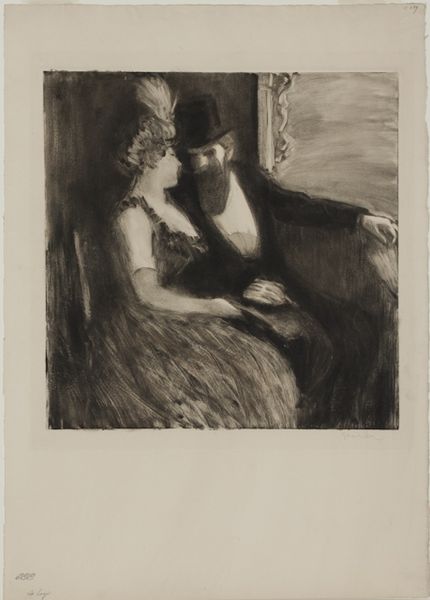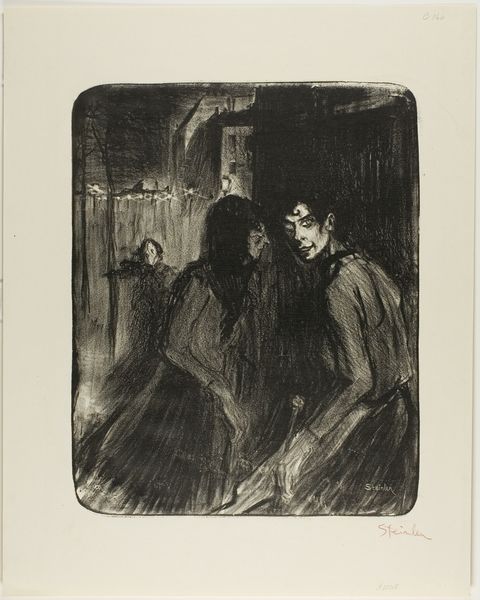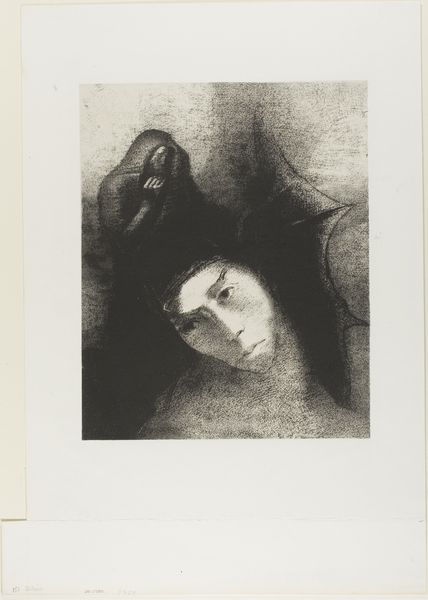
drawing, print, etching, paper
#
portrait
#
drawing
#
art-nouveau
#
narrative-art
# print
#
etching
#
figuration
#
paper
#
symbolism
#
monochrome
Dimensions: 217 × 318 mm (image); 266 × 335 mm (plate); 300 × 434 mm (sheet)
Copyright: Public Domain
This print, Attraction II, was made by Edvard Munch, using etching, drypoint, and aquatint on paper. These techniques, which rely on the corrosive power of acid to incise an image on a metal plate, were well established by Munch’s time. But he pushed them to expressive extremes. Look closely, and you can see how the velvety blacks and grays were achieved by layering different processes. For the darkest areas, he likely used aquatint, which creates a porous surface on the plate for the acid to bite into. The finer lines, describing the faces, were etched or made with a drypoint needle, directly scratching the metal. The material qualities of the print – its tonality, its stark contrast, its aura of ghostly light – all contribute to the image’s psychological intensity. In this way, Munch was part of a broader trend: late 19th and early 20th century artists who embraced printmaking as a powerful medium, and who were not afraid to get their hands dirty in the process. In his hands, a traditional method became something radically new.
Comments
No comments
Be the first to comment and join the conversation on the ultimate creative platform.
